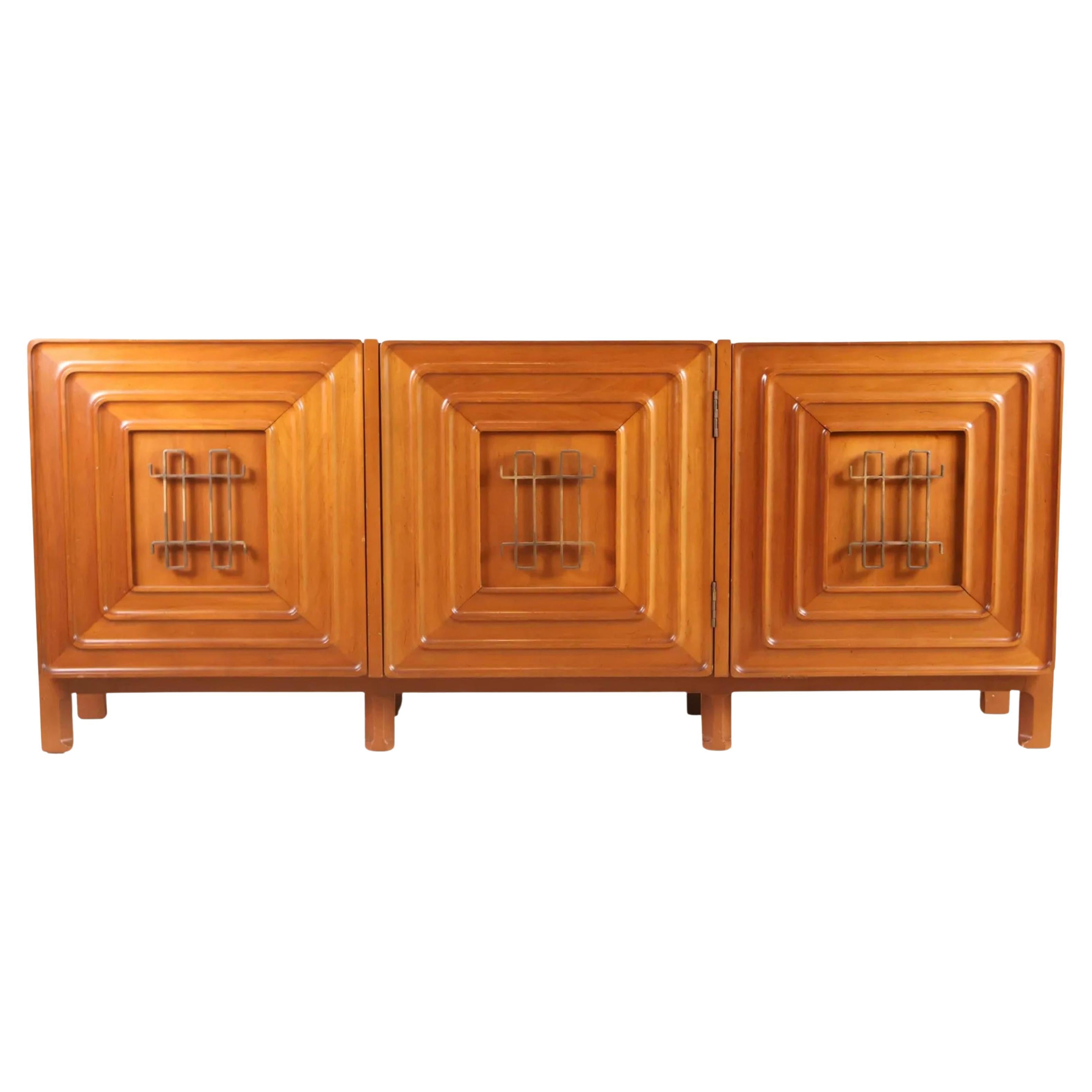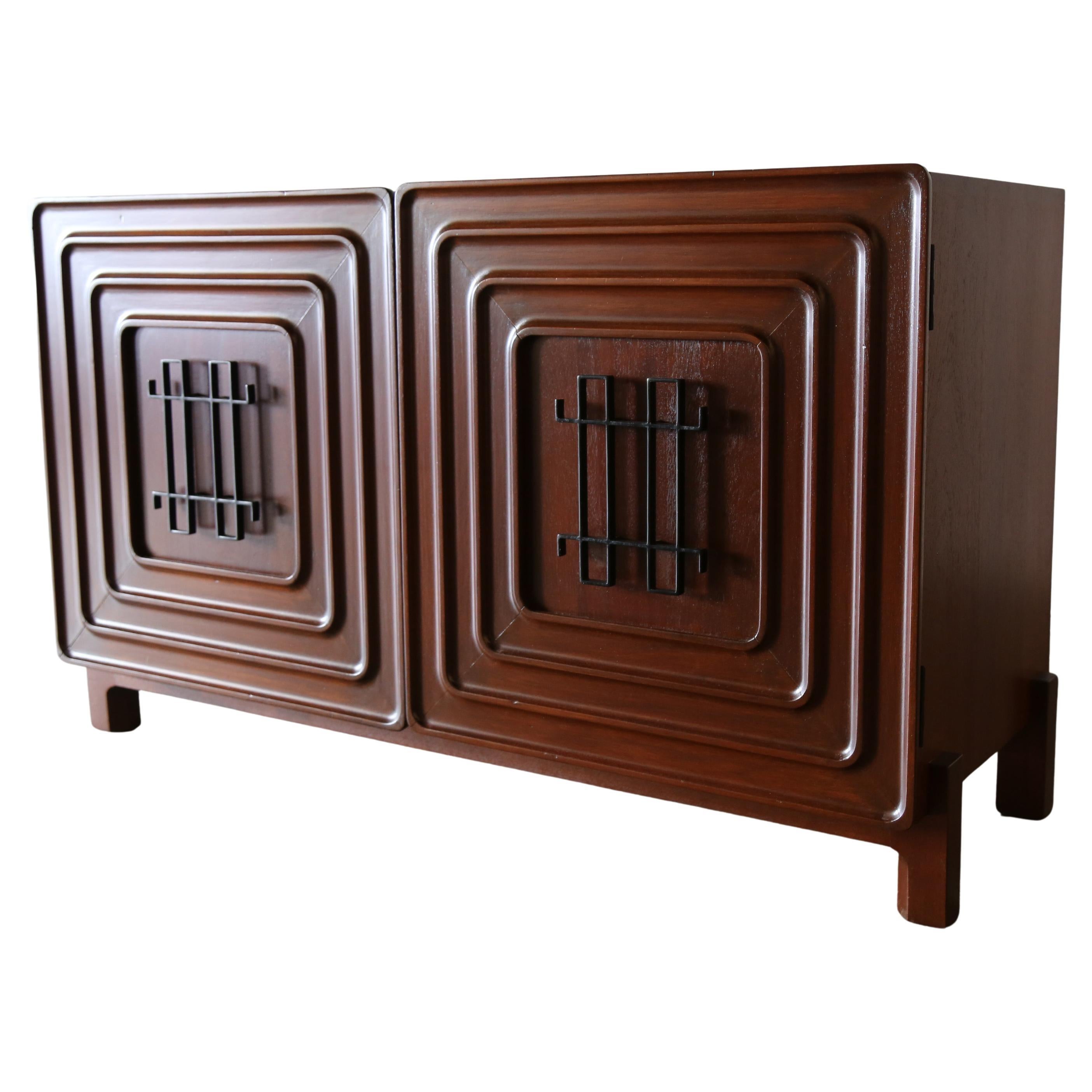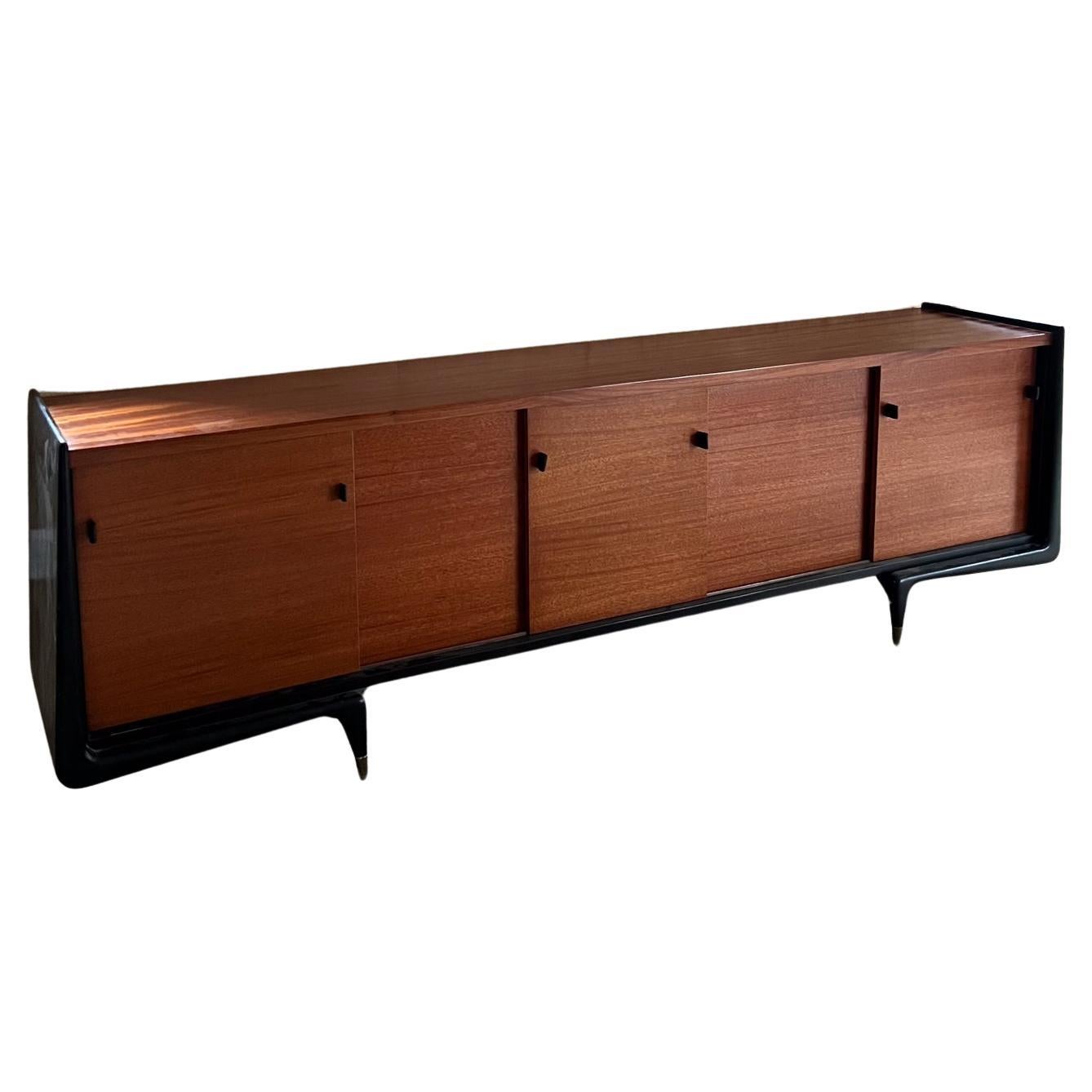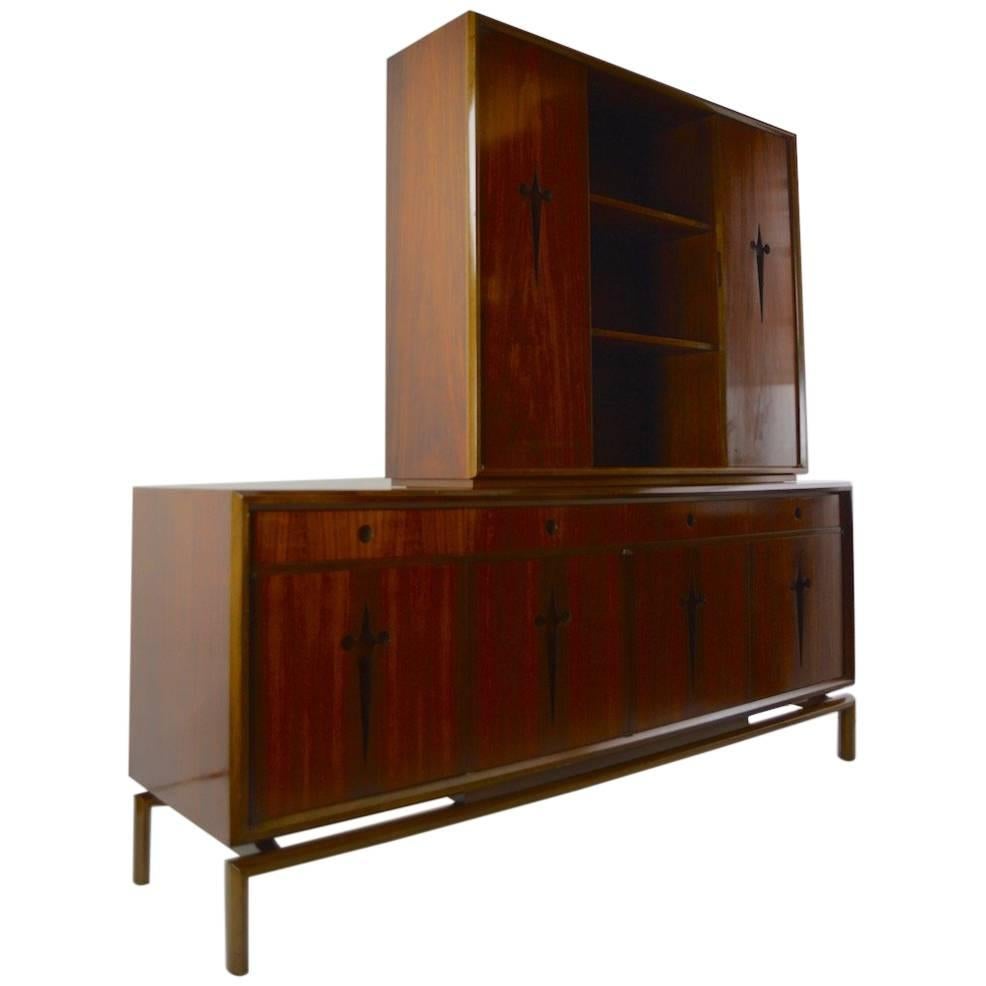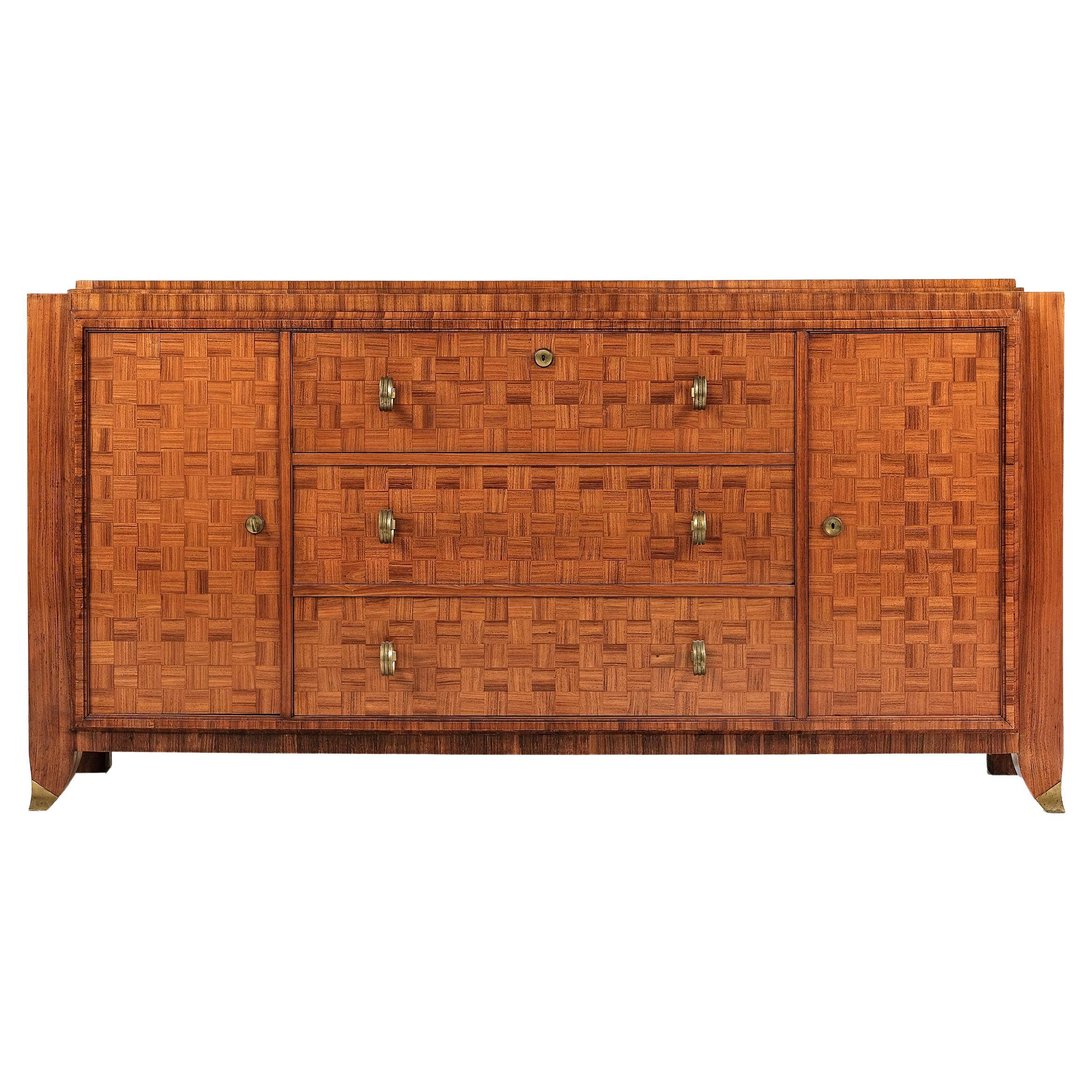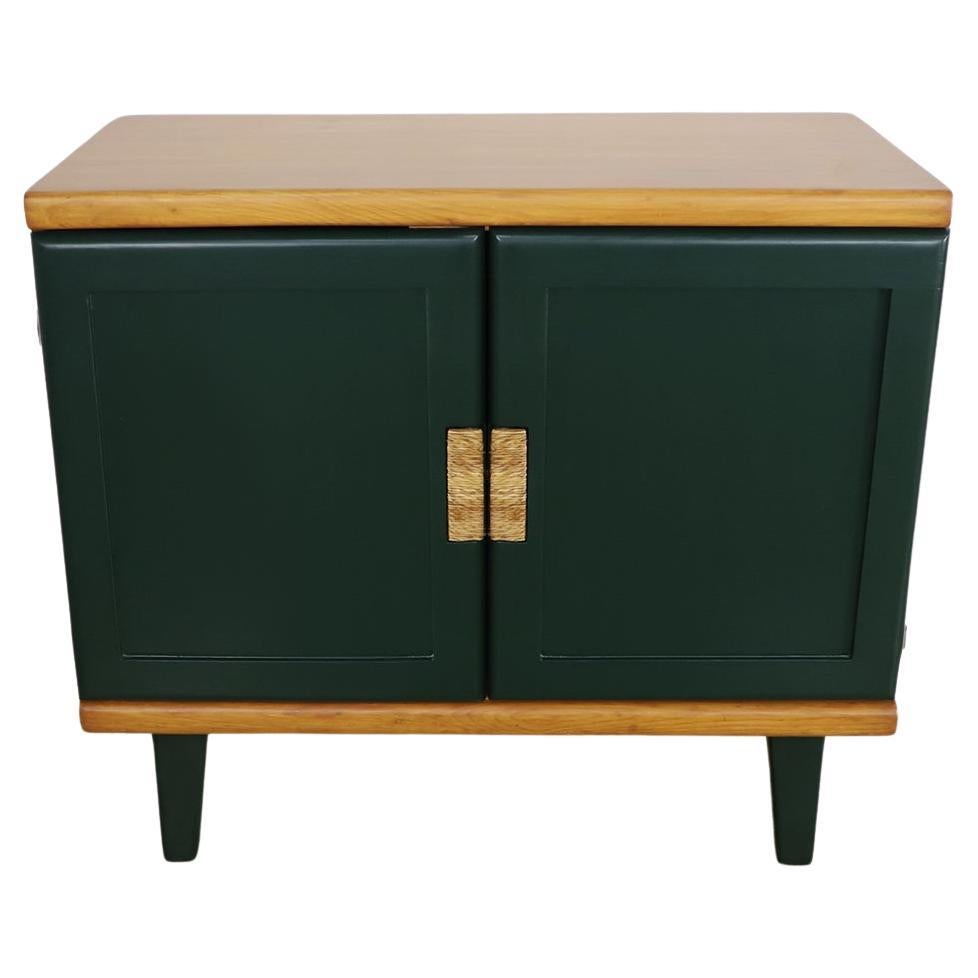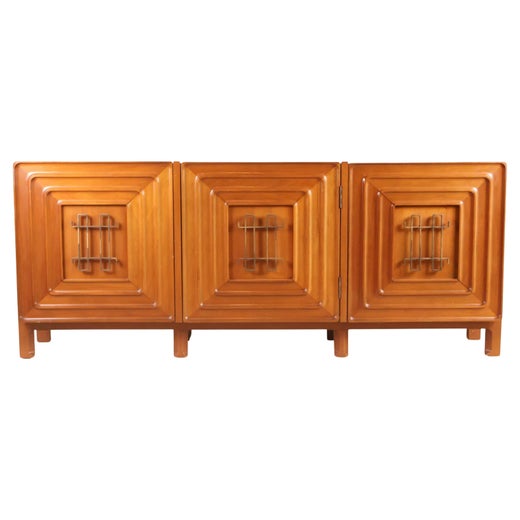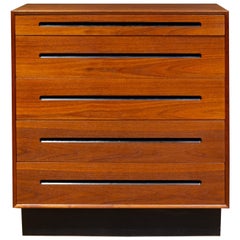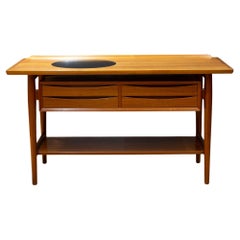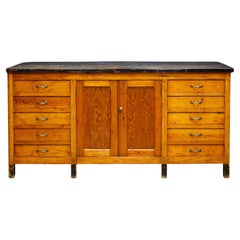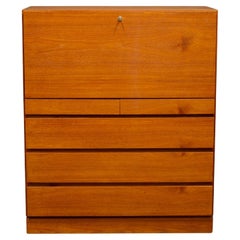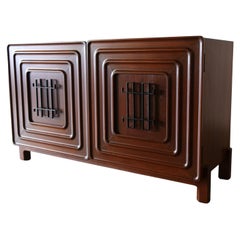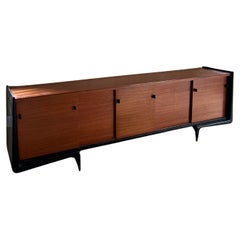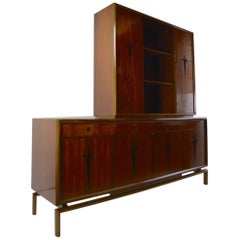Edmond J. Spence Credenza for Industria Meublera, Mexican Modernism c.1950
About the Item
- Creator:Edmond J. Spence (Designer),Industria Mueblera Mexico (Manufacturer)
- Dimensions:Height: 33 in (83.82 cm)Width: 52 in (132.08 cm)Depth: 20 in (50.8 cm)
- Style:Mid-Century Modern (Of the Period)
- Materials and Techniques:
- Place of Origin:
- Period:
- Date of Manufacture:1950
- Condition:Repaired: Repair left corner door. Repair on top-three small blemishes. Wear consistent with age and use.
- Seller Location:San Francisco, CA
- Reference Number:Seller: Consoles SKU 0181stDibs: LU1280243401862
Edmond J. Spence
Edmond J. Spence played an important role in promoting the tenets of Scandinavian modernism in the United States but his name remains conspicuously omitted from the history books. He was an American furniture designer who is known for having introduced the West to unfamiliar cultural tastes and translating their subtleties to appeal to mid-century-era consumers.
Spence honed his eye for good craftsmanship as a young man. His family owned a furniture manufacturing company based in Batavia, New York. While not much has been reported about his schooling, it was not long before he started designing his own nightstands, end tables, chairs and more — all of which exhibited the appealing traits associated with mid-century modern furniture. Spence experimented with form and ornament owing to inspiration he gathered from international influences.
During the 1950s, Spence drew on Asian and Swedish influences in developing ideas for his own style of modern furniture. He incorporated aspects of Mexican design to create the Continental-American collection. Manufactured in 1953 by Industria Mueblera, this collection of sculptural wooden furnishings with brass details epitomizes Spence’s ability to draw attention to the most integral parts of global design while adding his own modern spin. The designer’s Coronation Group — a series of dressers, cabinets and more in blonde woods that featured decorative birch veneers — was built by artisans in Sweden and imported for sale to postwar homeowners in the United States by Massachusetts furniture company Walpole.
Spence’s “Peineta” chair — a work of mahogany, plywood and woven palm that is demonstrative of Spanish Colonial influences and is part of the Continental-American line — has long been on display in the Los Angeles County Museum of Art while other works are held in the collection of the Metropolitan Museum of Modern Art. And if Spence hadn’t captured the hearts of Americans by way of Industria Mueblera showrooms and alluring ads in Interiors magazine, some of his furniture was used as set decoration for the widely loved sitcom I Love Lucy.
Find vintage Edmond J. Spence seating, storage and case pieces, tables and other furniture on 1stDibs.
- ShippingRetrieving quote...Shipping from: San Francisco, CA
- Return Policy
More From This Seller
View AllMid-20th Century Norwegian Mid-Century Modern Dressers
Wood, Teak
Mid-20th Century Danish Mid-Century Modern Console Tables
Teak
Early 20th Century American Industrial Industrial and Work Tables
Bronze
Mid-20th Century Danish Mid-Century Modern Dressers
Brass
Mid-20th Century American Mid-Century Modern Dressers
Teak
Mid-20th Century Danish Mid-Century Modern Desks and Writing Tables
Brass
You May Also Like
Vintage 1950s Mexican Mid-Century Modern Credenzas
Iron
Vintage 1950s Mexican Mid-Century Modern Credenzas
Mahogany
Vintage 1950s Mexican Mid-Century Modern Sideboards
Brass
Mid-20th Century American Mid-Century Modern Credenzas
Walnut
Mid-20th Century French Mid-Century Modern Sideboards
Rosewood
Vintage 1950s Mexican Mid-Century Modern Credenzas
Pine
